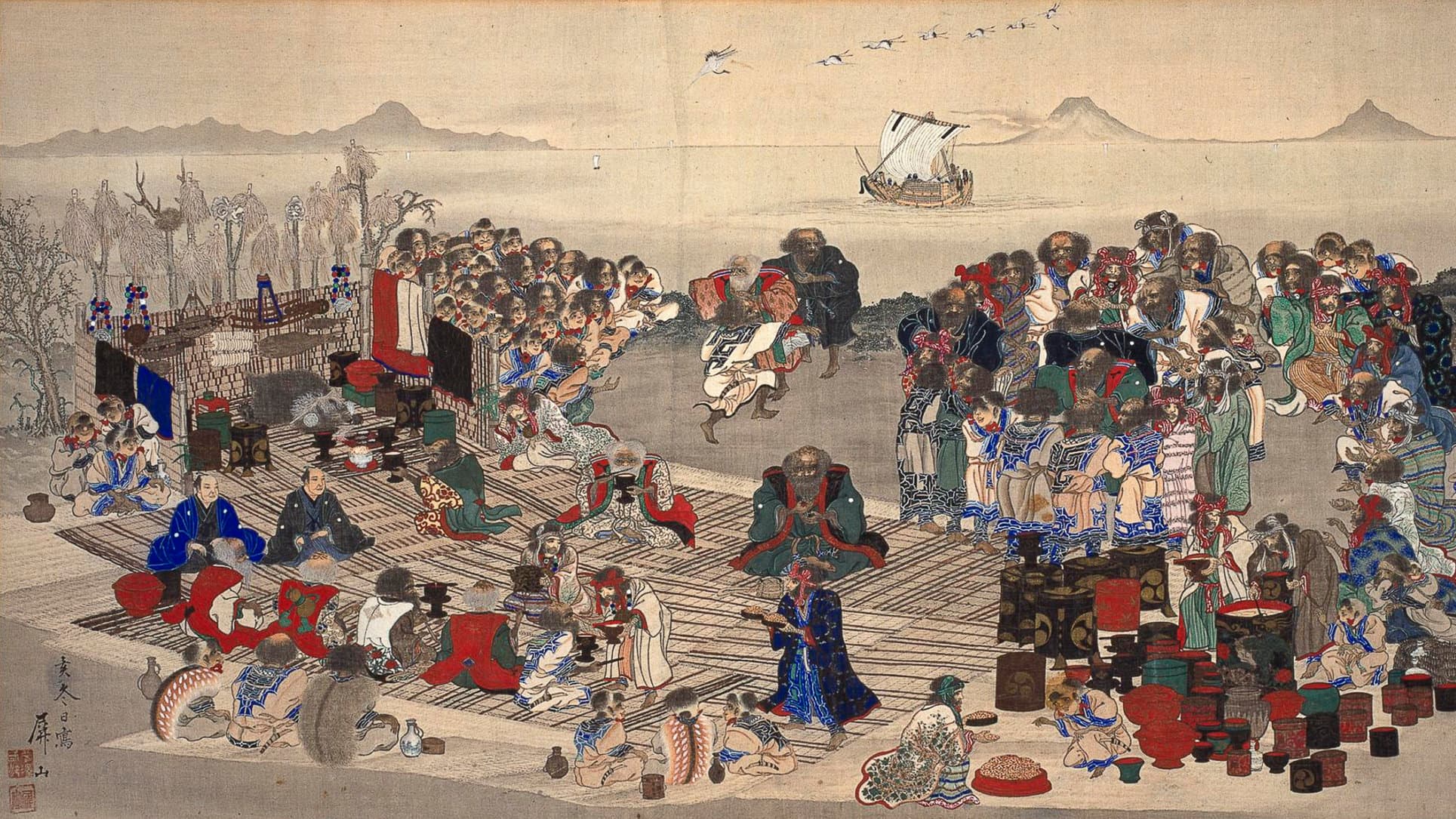
Ainu
アイヌThe Ainu are an indigenous ethnic group who have inhabited the northern regions of Japan, particularly Hokkaido, Sakhalin, and the Kuril Islands, for thousands of years. Their roots trace back to the Jomon period (14,000-300 BCE), making them one of the oldest ethnic groups in Japan. The Ainu may be descendants of an indigenous population once widely spread over northern Asia, with connections to Japan's prehistoric Jomon culture.
The exact origins of the early Ainu remain unclear, but it is generally agreed to be linked to the Satsumon culture of the Epi-Jomon period, with later influences from the nearby Okhotsk culture. Modern genetic studies reveal that Ainu individuals derive approximately 49% of their ancestry directly from the Jomon people, 22% from the Okhotsk people, and 29% from the Yamato Japanese.
Language and Cultural Identity
The traditional Ainu language, an isolate with a number of dialects, had been almost completely supplanted by Japanese by the early 21st century. Modern scholars have rejected the idea that the Ainu and Japanese languages are related beyond contact, such as the mutual borrowing of words. No attempt to show a relationship with Ainu to any other language has gained wide acceptance, and linguists currently classify Ainu as a language isolate.
Originating from the lands of Hokkaido, Sakhalin, and the Kuril Islands, the Ainu language has its own unique character. Distinct from Japanese, it shares some word order similarities yet has a number of grammatical differences. The Ainu language has no indigenous system of writing and has historically been transliterated using Japanese kana or Russian Cyrillic. As of 2019, it was typically written either in katakana or in the Latin alphabet.
Traditional Culture and Spirituality
Ainu were traditionally animists, believing that all things were endowed with a spirit or god. In the embrace of the northern Japanese archipelago, notably in Hokkaido, thrives the vibrant and distinctive Ainu culture. Here, a language unrelated to Japanese weaves tales of spirituality, where every part of the natural world houses spirits.
Central to Ainu culture is the reverence for nature and the spirits, known as kamuy. These spirits reside in animals, plants, and natural phenomena. The bear, for example, holds a special place in Ainu spirituality and is celebrated through the 'bear sending' ritual, or Iomante. The most important ritual took place over several years and involved the capture of a bear cub that was then raised as a member of the family; at a designated time, the bear was ritually killed. Having treated the bear well in life, the Ainu believed that in death its spirit would ensure the well-being of its adoptive community.
After puberty, women were given distinctive tattoos such as around their mouths and wrists, while men never shaved after a certain age. Both typically wore earrings. Their traditional attire, the attus, woven from the inner bark of the indigenous ito-tree (Japanese False Nettle), showcases intricate embroidery and patterns that signify different familial lineages and regions.
Traditional Lifestyle and Economy
The historical Ainu economy was based on farming as well as hunting, fishing, and gathering. Historically, the Ainu lived in harmony with nature, relying on fishing, hunting, and gathering for sustenance. Although the Ainu were predominantly a hunting and gathering culture, some members also engaged in shifting agriculture, a method in which fields are used for a few seasons and then abandoned so as not to exhaust the soil.
Once, Ainu life echoed in the mountains, where the Ainu hunted bears and deer, and by the coast, where they hunted seals and swordfish and gathered kelp. The seasons brought the harvest of wild plants – victory onion in spring, giant lily in summer and yellowfin bream in fall – and the bounty of rivers, particularly salmon.
Active participants in exchanges, the Ainu fostered connections with neighboring peoples - from the ethnic Japanese in the south to the Nivkh, Tungusic, Itelmen, and Aleuts in the north and east. From their homeland, the Ainu carried dried fish and fur for trade. In Chinese ports, they packed their canoes with brocades, beads, coins, and pipes for the Japanese. In turn, they carried Japanese iron and sake back to the Chinese.
Related Places
Last Updated:
